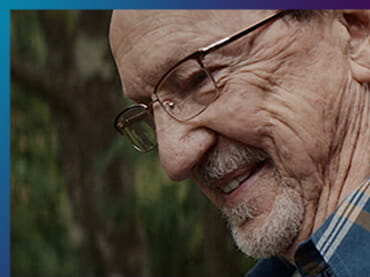Emphysema Treatments
Chronic obstructive pulmonary disease (COPD) represents the fourth leading cause of death in the United States. However, effective treatment options do exist.
Although treatment cannot reverse damage from emphysema, it may slow the progression of the disease. If you smoke, the single most effective treatment involves quitting smoking.
Non-surgical treatment and therapies for emphysema
- Smoking cessation program to slow disease progression
- Breathing assistance machine (BiPAP)
- Medicine:
- Inhaled steroids to reduce inflammation
- Inhaled bronchodilators to open airways (Atrovent, Spiriva, Serevent, albuterol)
- Anti-inflammatory medications, such as Montelukast (Singulair) and roflumilast
- Oral or intravenous steroids
- Oxygen therapy
- Antibiotics for flare-ups to prevent infection
The experts at the UPMC Esophageal and Lung Surgery Institute also provide surgical options for people with emphysema.
Lung volume reduction surgery (LVRS) for emphysema
Some people with emphysema may have areas of the lung that are more affected than others. The LVRS procedure removes up to 35 percent of the poorly functioning lung tissue from each lung.
By removing this space-occupying tissue, the remaining relatively healthy lung tissue and surrounding muscles can work more efficiently. This allows for easier breathing and helps people with emphysema enjoy a better quality of life.
UPMC is one of the only hospitals in the United States approved to perform this life-enhancing procedure. In fact, James Luketich, MD is a pioneer in both minimally invasive surgery techniques and LVRS specifically.
At the Esophageal and Lung Surgery Institute, you have a team of medical specialists and allied professionals all in one location. There’s no need to travel from facility to facility for testing, rehabilitation, and surgery.
It’s a comprehensive, collaborative program that offers the best opportunity for those with emphysema to enhance their quality of life and improve their health status overall.
LVRS criteria and preliminary testing
You may want to consider LVRS if your emphysema greatly impacts your quality of life.
| Emphysema located mainly in the upper lobe of the lung(s) and a low exercise capacity, |
You may benefit the most from this surgery. |
| A high exercise capacity and upper lobe predominant emphysema, |
You may qualify for LVRS, but the impact on mortality is not as significant. |
| Non-upper lobe predominant emphysema and decreased exercise capacity, |
Surgeons — in select cases — may agree to perform LVRS. It’s important to check with your doctors to see if you may qualify as a candidate in this case. |
It’s important to know the strict criteria necessary to qualify for LVRS.
You must have stopped smoking for a minimum of four months to undergo preliminary testing for LVRS. Prior to preliminary diagnostic tests, doctors will order tests that will show if you’ve used tobacco products in the past four months.
Medical risk assessment
A key factor in determining eligibility for LVRS involves undergoing careful medical risk assessment testing. These preliminary tests determine whether you are likely to survive the surgery and thrive after the operation.
Some of the preliminary tests include:
- CT scan — to look at the lungs carefully and determine if you have a clear-cut delineation of emphysema in the upper lobe region of the lung(s), or if the emphysema appears spread throughout the tissue.
- Routine pulmonary function testing — to establish baseline lung function.
- Ventilation/perfusion scan — uses scintigraphy, or medical isotopes, to evaluate the circulation of blood and air in a person’s lungs. This test will help doctors better establish upper lobe predominance of emphysema.
- Arterial blood gas test — to establish oxygen and carbon dioxide levels in the blood.
- Exercise test — may include a six-minute walk with standard protocols to measure how much work your body can perform.
- Cardiac testing — after the above preliminary tests, you’ll likely have an echocardiogram and a cardiac stress test.
What to expect during LVRS
Before surgery, once you’ve passed all the preliminary testing and qualified for the LVRS procedure:
- Your doctor will enroll you in a pulmonary rehabilitation program.
- The therapists working in the program will assign an exercise regimen to enhance cardiopulmonary status.
After minimally invasive LVRS, you will:
- Typically stay in the hospital between five and seven days.
- Should feel quite good by about two weeks after the operation.
- Return to your pulmonary rehabilitation program where therapists will work with you to greatly enhance your cardiopulmonary status through specialized exercise programs.
Lung transplant surgery for emphysema
A lung transplant may represent an option for those with very advanced (end stage) disease or disabling emphysema symptoms.
UPMC's Lung Transplant Program is one of the most recognized and experienced centers in the world. This expertise allows us to accept many people as lung transplant candidates that other centers may decline.
Learn more about COPD treatments in our Health Library:
Contact Us
Contact the UPMC Esophageal and Lung Surgery Institute with questions or for more information.
Or, call the Thoracic and Foregut Surgery Division at 412-647-7555.

















